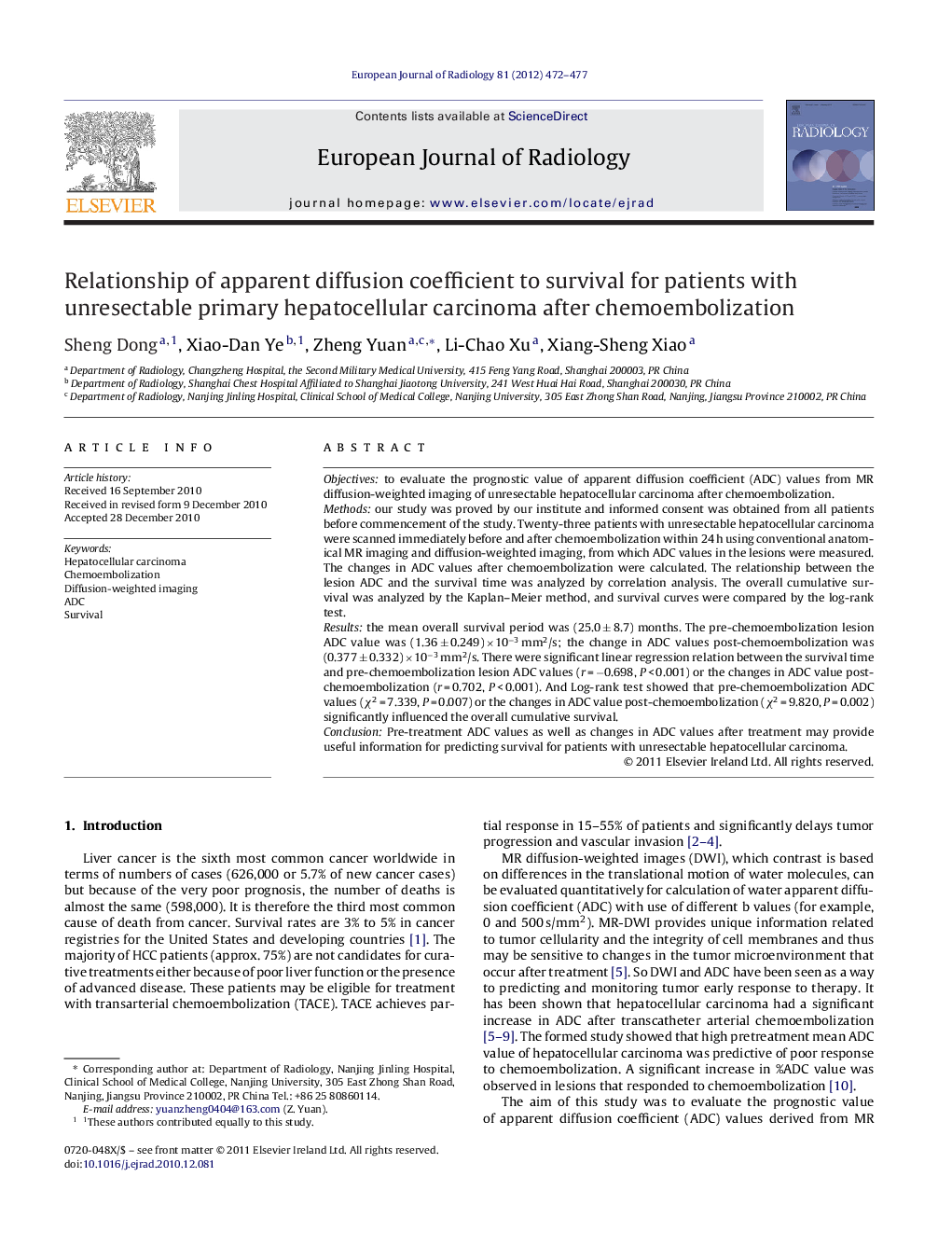| Article ID | Journal | Published Year | Pages | File Type |
|---|---|---|---|---|
| 4226437 | European Journal of Radiology | 2012 | 6 Pages |
Objectivesto evaluate the prognostic value of apparent diffusion coefficient (ADC) values from MR diffusion-weighted imaging of unresectable hepatocellular carcinoma after chemoembolization.Methodsour study was proved by our institute and informed consent was obtained from all patients before commencement of the study. Twenty-three patients with unresectable hepatocellular carcinoma were scanned immediately before and after chemoembolization within 24 h using conventional anatomical MR imaging and diffusion-weighted imaging, from which ADC values in the lesions were measured. The changes in ADC values after chemoembolization were calculated. The relationship between the lesion ADC and the survival time was analyzed by correlation analysis. The overall cumulative survival was analyzed by the Kaplan–Meier method, and survival curves were compared by the log-rank test.Resultsthe mean overall survival period was (25.0 ± 8.7) months. The pre-chemoembolization lesion ADC value was (1.36 ± 0.249) ×10−3 mm2/s; the change in ADC values post-chemoembolization was (0.377 ± 0.332) ×10−3 mm2/s. There were significant linear regression relation between the survival time and pre-chemoembolization lesion ADC values (r = −0.698, P < 0.001) or the changes in ADC value post-chemoembolization (r = 0.702, P < 0.001). And Log-rank test showed that pre-chemoembolization ADC values (χ2 = 7.339, P = 0.007) or the changes in ADC value post-chemoembolization (χ2 = 9.820, P = 0.002) significantly influenced the overall cumulative survival.ConclusionPre-treatment ADC values as well as changes in ADC values after treatment may provide useful information for predicting survival for patients with unresectable hepatocellular carcinoma.
